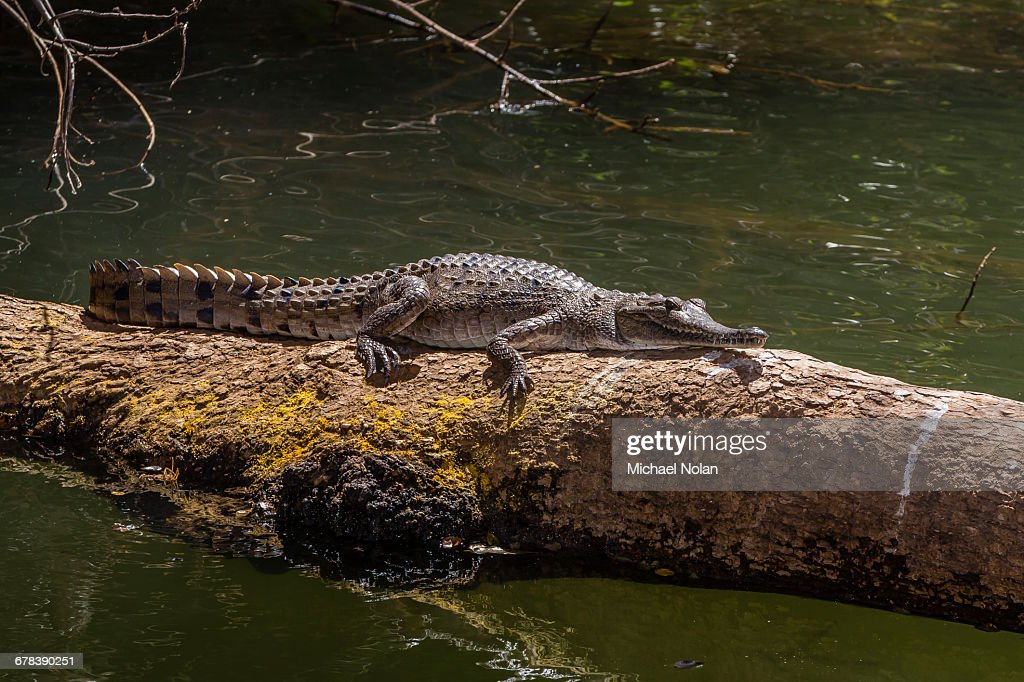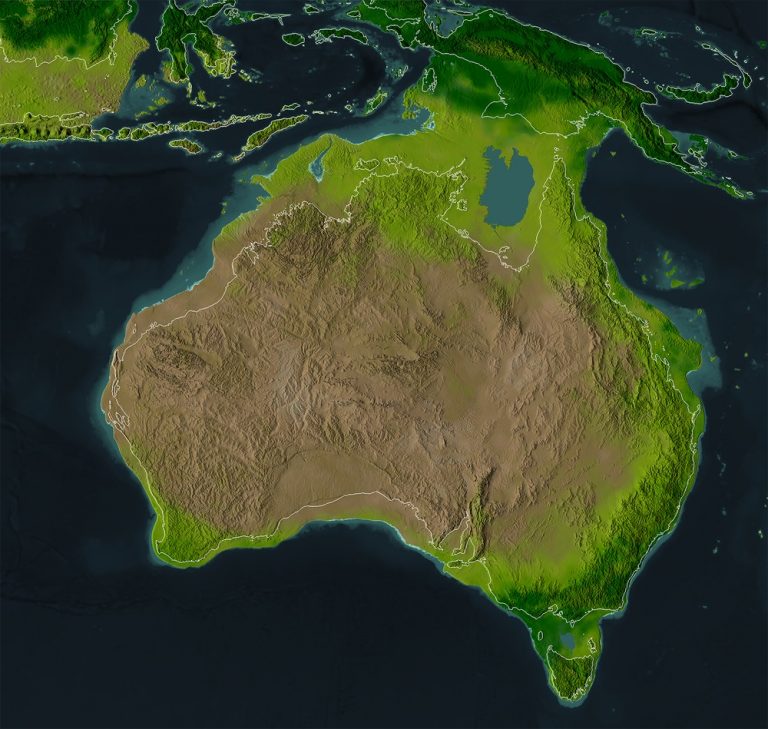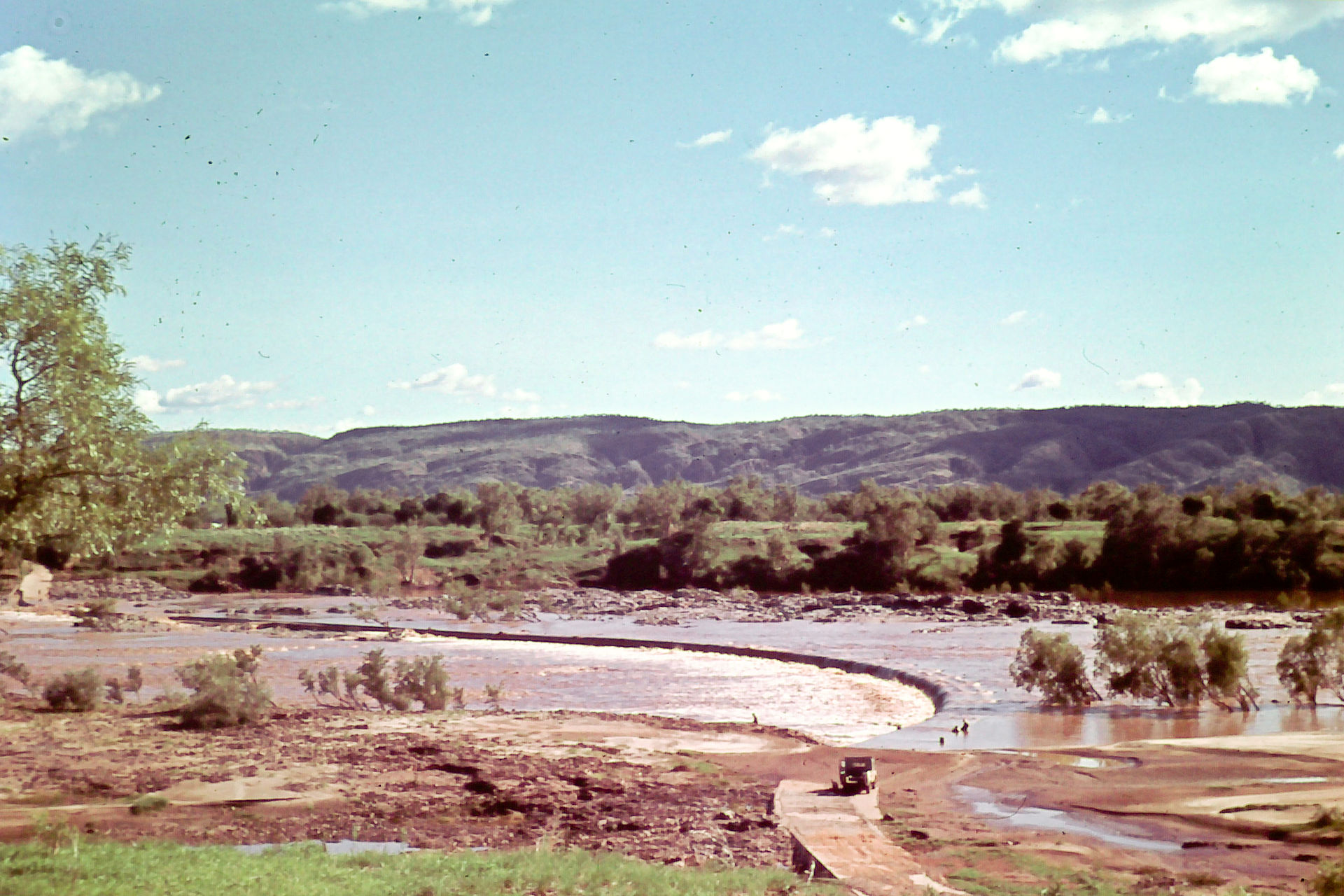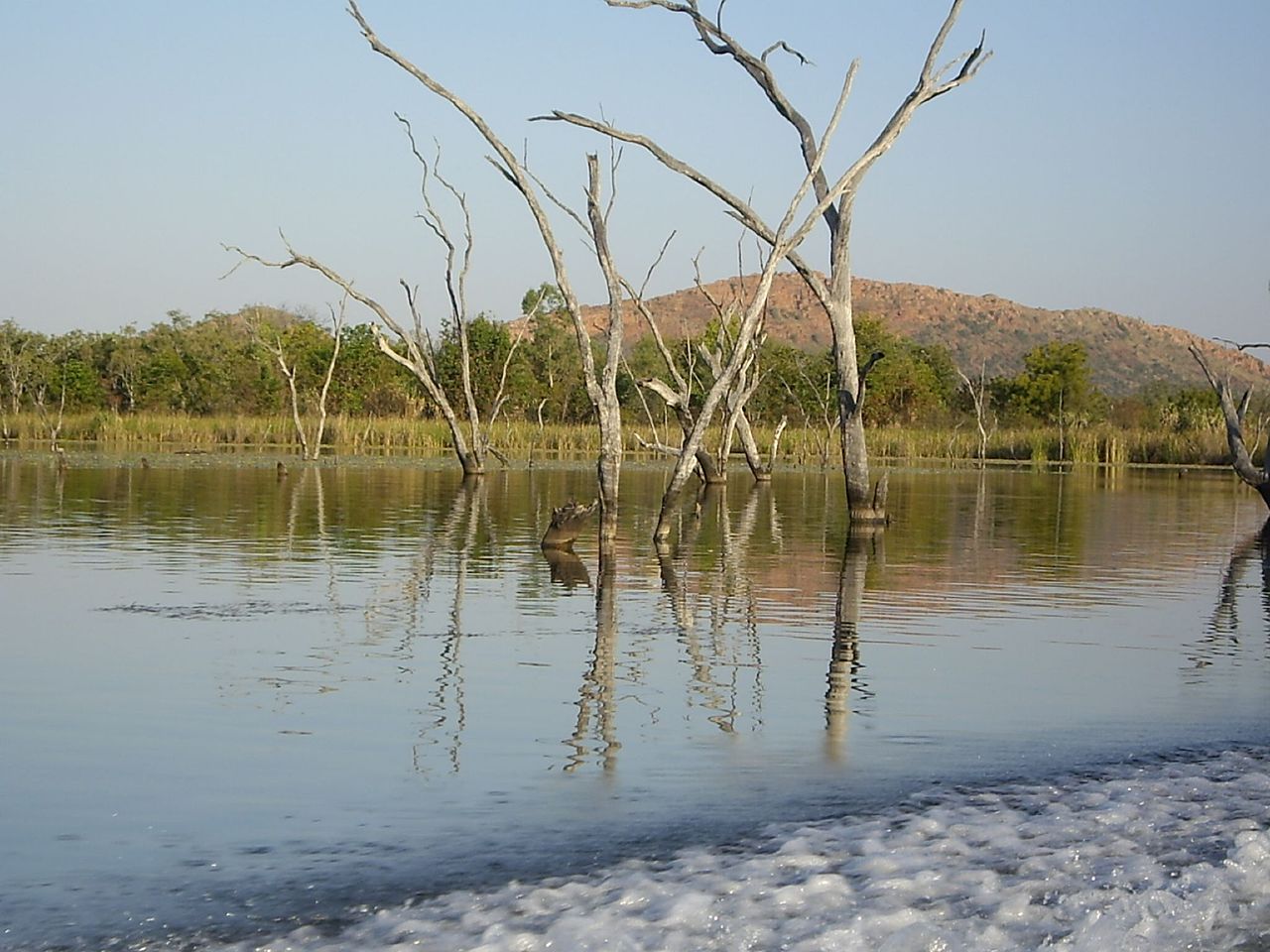
AsianOverland.net
Tour Guide - Itinerary
Asian Overland Sydney to London
Started 22/06/2022 Finished 21/06/2023365 Days ITINERARY
Day 27 date 18/07/2022EL QUESTRO to KUNUNURRA, THE KIMBERLEY
ASIANOVERLAND.NET SYDNEY TO LONDON DAY 27: EL QUESTRO TO KUNUNURRA, THE KIMBERLEY
Kununurra is in far northern Western Australia at the eastern extremity of the Kimberley, about 45 kilometres from the border with the Northern Territory. Kununurra was founded in 1961 to service the Ord River Irrigation Scheme.
Kununurra is the largest town in Western Australia north of Broome, and is 3,040 kilometres from Perth via the Great Northern Highway.
The name Kununurra is derived from the English pronunciation of the word Goonoonoorrang, which in the Miriwoong language means 'river', 'Big Waters' or 'Big River'. The Ord River runs for hundreds of kilometres coming from the south near Hall's Creek.
Above is the site of the Ord River before dam construction - note that the Aboriginal people forded the river for river crossings, fish trapping and water preservation, a practice followed across many Australian rivers.
A 1943 soil classification named the volcanic clay known locally as "blacksoil", the predominant soil type of the irrigation area, as "Cununurra Clay". "Cununurra" was put forward as a possible name for the proposed new town, but "Kununurra" was decided just days before the newest town of the Kimberley was gazetted on 10 February 1961.
Kununurra is among the scenic hills and ranges of the far north-east Kimberley region, and has an abundance of fresh water, conserved by the Ord River Diversion dam and the main Ord River Dam.
A river cruise up the Ord River to the Ord River dam is a must – very scenic and great diversity of wildlife, but don’t fall into the Ord River, as it is infested with saltwater crocodiles. Many crocodiles can be seen sunbaking on the banks and logs of the Ord River.
The Lower Ord River has a very high population of saltwater crocs, including 5+ meter saltwater crocs. Absolutely no swimming here, and always keep your limbs inside your watercraft.
Apparently, swimming with freshwater crocodiles is fine, so here’s a tip I found to help you:
“There’s a big difference between the 2 kinds of crocodiles that are found in the Kimberley’s waterways (freshwater and saltwater) and any swimming references in this article are always with freshwater crocs only. Remembering also, saltwater crocs can be found in fresh water. When swimming with freshies, remember that they are wild animals and must be given their space. …”
The Kimberley is a region of great linguistic diversity, rivalled in Australia only by the Top End. About 50-60 Aboriginal languages were spoken in the Kimberley, and the vast majority of these do not belong to the family of Pama-Nyungan languages, which are prevalent in the rest of Australia. Four primary language families are recognised within the Kimberley region:
- Nyulnyulan languages, including languages spoken on the Dampier Peninsula and along the Fitzroy River
- Bunuban languages, including languages spoken in the Fitzroy River Basin
- Worrorran languages, including languages spoken in the northern Kimberley, north of King Sound, up to Wyndham
- Jarrakan languages, including languages spoken along the Ord River, from Halls Creek up to Wyndham and Kununurra.
Pama-Nyungan languages spoken in the Kimberley region include the Marrngu languages, the Ngumpin languages, the Yapa languages and the Western Desert languages.
The dominance of the Pama-Nyungan languages in the rest of Australia is explained by the fact that the First Australians walked from New Guinea to Cape York during the first Ice Age about 70,000 to 60,000 years ago. At that time the sea level was only 60-70 meters below the present level, and the only land bridge from New Guinea to Australia was Cape York. The Gulf of Carpentaria was not yet a lake. The Pama-Nyungan languages spread throughout Australia for about 40,000 years from 70,000 years ago until 30,000 years ago, when the last ice age extended the land bridge across southern Papua New Guinea to Arnhem Land and Northern Australia.
The language diversity in the Kimberley and the Top End could be attributed to the last ice age, 30,000 to 18,000 years ago, when the sea level was 135 meters below the present level. Northern Australia was connected to most of Papua New Guinea, so humans could walk from West Papua to the Top End and the Kimberley, taking diverse languages with them to the west of Lake Carpentaria, which during that era was a tropical inland freshwater lake.
© This work is copyright. Apart from any use permitted under the Copyright Act 1968, no part may be reproduced by any process, nor may any other exclusive right be exercised, without the permission of Peter Searle, peter@portseavillageresort.com; 1980-2024.
Website built by Justin O’Dea www.webdeveloperdocklands.com.au











